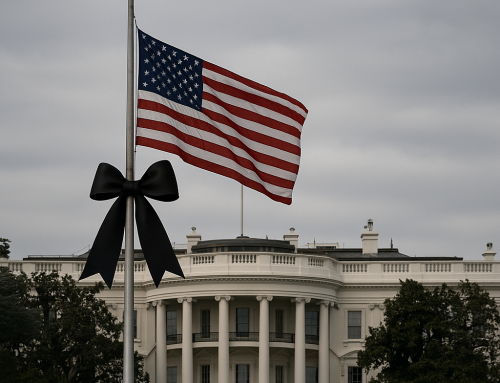
Introduction
Since 2011, with the outbreak of the Arab Spring, the Middle East has gone through profound political, social and economic changes. The protests have challenged authoritarian regimes, highlighted deep-seated injustices and redrawn the balance of power in the region. However, despite initial hopes for greater democracy and cooperation, the subsequent landscape has been characterized by instability, fragmentation and a renewed assertion of authoritarianism.
The Israel-Hamas conflict,which erupted on Oct. 7, 2023, is the latest example of unresolved tensions and new alliance dynamics in the region. The said conflict , highlighted the interconnectedness of regional tensions. Hamas, backed by Iran, has presented itself as a symbol of Palestinian resistance, while Israel has strengthened its alliances with countries such as the United Arab Emirates, in a context influenced by the Abrahamic Accords. The conflict has shown that internal divisions in the Arab world have not led to a unified response, underscoring once again the fragmentation of the region. We want to focus in particular on the aspect of geopolitical transformations in the Middle East from 2011 to the present, examining alliances, the role of non-state actors and future implications for stability in the area.
The analysis of these events can be conducted through three main theoretical perspectives:
Realism: Middle Eastern states have redefined their foreign and domestic policies to ensure their own survival, forging strategic alliances based on immediate interests rather than shared values.
Constructivism: The evolution of ideologies and political identities has played a crucial role in the region’s conflicts, with the decline of pan-Arabism and the rise of political Islam and sectarian divisions.
Neo-Gramskyism: Globalization and neoliberal economic policies have redefined power relations, fostering new forms of regional hegemony and incentivizing resistance movements.
Fluid alliances and the decline of regional cooperation
After the Arab Spring, traditional regional organizations, such as the Arab League and the Gulf Cooperation Council (GCC), proved ineffective in managing crises. In their place, fluid alliances, or temporary coalitions created to deal with specific threats, have emerged. For example, Saudi Arabia and the United Arab Emirates have collaborated to counter the Muslim Brotherhood, while Iran and Turkey have supported Islamist actors to expand their influence.
As of Feb. 1, 2025, Israel’s geopolitical situation is complex, with various allies and enemies depending on international political contexts and developments. Here is an overview of the main alliances and antagonisms:
Israel’s main allies:
United States: The United States has long been a major ally of Israel, both politically and militarily. The two nations share strategic and security ties, with the United States providing economic and technological support to Israel. The relationship is also strengthened by a strong cultural and diplomatic connection.
European Union (in part): Some European countries, such as Germany and the United Kingdom, have cooperative relations with Israel, although they do not always agree with all its policies. Germany has a special bond, partly because of historical responsibility related to the Holocaust.
Some Arab countries: In recent years, several Arab countries have entered into diplomatic relations and normalization agreements with Israel, particularly through the Abrahamic Accords (2020), brokered by the United States. These include:
United Arab Emirates
Bahrain
Morocco
Sudan (limited but developing diplomatic relations)
India: India has developed close cooperation with Israel in various areas, including defense, technology and agriculture.
Israel’s main enemies:
Iran: Iran is one of Israel’s bitterest adversaries, mainly because of its support for militant and terrorist groups operating against the Jewish state, such as Hezbollah in Lebanon and Hamas in the Gaza Strip. Iran strongly opposes Israel’s existence and has a policy of denying its legitimacy.
Militant groups and terrorist organizations:
Hamas: The Palestinian militant group that controls the Gaza Strip is one of Israel’s main enemies, engaging in armed conflicts and attacks against the country.
Hezbollah: A Lebanese group backed by Iran, Hezbollah is a well-organized military force that has fought against Israel, especially along the Israel-Lebanon border.
Palestinian Authority (politically, but unevenly): Although there have been attempts at negotiations and a significant portion of the Palestinian leadership has sought a two-state solution with Israel, the political rift between the Palestinian Authority (based in the West Bank) and Hamas makes a unified position difficult. However, the Palestinian Authority is engaged in a political conflict with Israel over the creation of a Palestinian state.
Some Other Arab Countries and Islamic Movements: Some countries, such as Syria andEgypt (prior to the peace agreements with Israel), and other more radical Islamic states and movements, continue to be hostile toward Israel, although there are evolutions in diplomacy.
In summary, Israel has strategic allies mainly in the West and in some Arab countries, but it also maintains numerous enemies, many of whom are actively involved in direct or indirect conflicts with the Jewish state.
Comparison with biblical prophecies
Many scholars and believers believe that geopolitical events in the Middle East are in line with some biblical prophecies. Let us look at some significant connections:
Wars and regional conflicts The Bible predicts times of war and unrest in the Middle East (Matthew 24:6-7, Ezekiel 38-39). Instability and continuing political fragmentation seem to mirror these prophecies.
Israel’s Rebirth as a Central Actor The return of the Jewish people to their land (Ezekiel 36:24) and Jerusalem’s role in global tensions (Zechariah 12:3) are reflected in the Israel-Hamas conflict and international reactions.
The alliance of nations against Israel Prophets such as Daniel (chapter 11) and Zechariah speak of coalitions of nations opposing Israel in the end times. Iran’s support for Hamas and Hezbollah, and the role of Russia and China in redrawing the balance of power, could be seen in this light.
The pursuit of peace and its fragility 1 Thessalonians 5:3 warns that when the nations say “peace and safety,” sudden destruction will come. The Abrahamic Accords and other attempts at normalization could be interpreted as part of this prophetic scenario.
These connections do not imply a deterministic reading of events, but highlight how Scripture can offer an interpretive framework for geopolitical developments in the Middle East.
Bibliography
(Based on academic sources in the original article, adapted for the Italian context)
Bahgat, G. (2022). The new geopolitics of the Middle East. Journal of Middle Eastern Studies.
Gause, F. G. (2014). Beyond sectarianism: The new Middle East cold war. Brookings Institution.
Fawcett, L. (2020). Alliances and regionalism in the Middle East. Oxford University Press.
Waltz, K. N. (1979). Theory of international politics. McGraw-Hill.
Wendt, A. (1999). Social theory of international relations. Cambridge University Press.
List of Bible passages cited
Matthew 24:6-7
Ezekiel 36:24
Ezekiel 38-39
Zechariah 12:3
Daniel 11
1 Thessalonians 5:3




